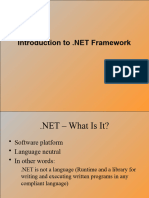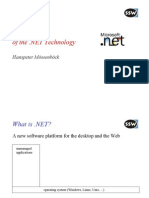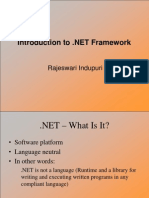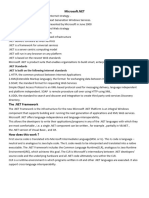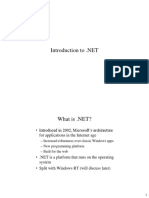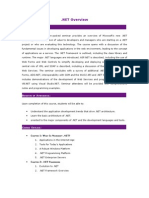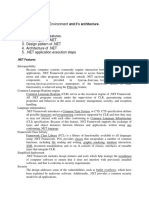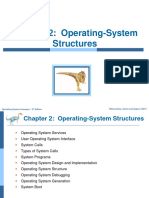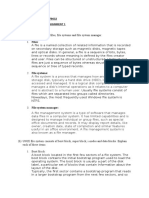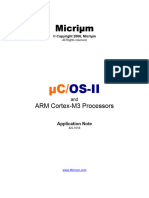Introduction to .
NET
Technology
Marcello Benati
Software Engineer
.NET Architect
�Agenda
Introductions
NET Architecture concepts and how they interact
with W3C Standards
Microsoft Business Integration Roadmap (2006
onward)
Brief explanation of BizTalk Server, SharePoint
Portal and Host Integration Server
Some examples of how we integrated Microsoft to
ISeries and AS/400 (high level)
Best Practices of the .NET SOA
�What Is .NET?
Foundation of development efforts from here on out
Unified development, regardless of language
Common functionality available via a class library
language independent
Integrated Development Environment that behaves
similarly for all languages
Unified development, regardless of platform
Class library, templates, etc. allow development on
many platforms
Web development, desktop development, mobile
development are all programmed in the same type of
fashion
�What Is .NET? (cont)
Unified development, regardless ofoperating
system?
In theory, quite possible - .NET applications could be
run on other operating systems! Just need the key
.NET elements ported to the platform
Such efforts already exist Mono (.NET apps on
*nix), Rotor (open source .NET CLI)
Microsoft is supporting and even sponsoring many of
these initiatives
�.NET Core Technology
.NET has quite a few different parts
Common Language Runtime (CLR)
Common Language Infrastructure (CLI)
Common Language Specification (CLS)
.NET Framework tools (examples include gacutil,
sn, and all the compilers)
.NET Framework is FREE (including the compilers!)
.NET development is made MUCH easier by using
Visual Studio .NET
�How .NET Impacts Businesses
Productivity Increases
Reduced development time (class library, more efficient
coding constructs) - example
Keep existing language skills intact
Allows more interoperation between developers
Better Code
Means less support and help desk calls!
Again, accomplished in large part by the class library
Also due to better coding constructs and patterns
Faster Code
Fewer lines of code
Better memory management
JIT compiling
�Technical Advancements
The Class Library! (CLR)
No longer need languages like C++ to get difficult tasks
accomplished
Dont have to rely on the Win32 API (though you still can)
Continuing evolution
New Languages
C# (C-Sharp)
The power of C++, the ease of Java
Ideal candidate for new development
Visual Basic .NET
Not just a new version of Visual Basic
Brings new functionality to the platform has almost all the
power of any other .NET language, including C++
Very easy to pickup by current VB developers
�Technical Advancements (cont)
Interoperability
You dont need to get rid of existing code!
Upgrade it
Connect to it
You can use .NET from legacy applications
Expose .NET components as COM (ActiveX) objects
Transparent calling
Interoperate with other platforms
Connect with Java
Connect with objects on other platforms: Unix/Linux,
mainframes
�Interoperation Active Directory
Active Directory is right at home in .NET
There is a set of objects in the class library specifically
for interacting with Active Directory/LDAP sources
System.DirectoryServices namespace
Can query AD objects, as well as update and delete
them
MUCH easier than ADSI calls binding operations can
be done in a single line, and individual properties can
then be queried
Using other class library objects, can test for
user/group membership
Makes developing secure authenticating applications
much easier
���Microsoft Integrated Platform
�Interoperability - Databases
Data is all-important to the .NET strategy
Built in managed providers for SQL Server, and
now for Oracle
Managed providers are much faster than their ODBC
counterparts
Can be easier to use as well
Other databases are not left out Access, DB2,
MySQL, etc. can be handled through the OLEDB
provider
Non-traditional databases like Excel can also be
accessed easily
��Advancements in Web Applications
Web Services
A very big selling point for .NET - .NET was built with web
services in mind!
Very easy to build web services usually involves adding one
line of code to an object
Even easier to consume web services, including those running
on Java platforms
ASP.NET
Forget everything you knew about ASP
ASP.NET applications can be built in any .NET language
They are compiled very high performance
Useful tools built into Visual Studio
WYSIWYG interface for design
Drag and drop components on to forms
Validation, authentication and other objects are easily leveraged
�Deployment considerations
��.NETs Future (cont)
Windows VISTA
A whole new set of programming interfaces byebye Win32!
New advancements in technology
Avalon, a whole new graphics interface
WinFS, a new file system architecture
Indigo, unified messaging
This will all have its foundations in .NET
�Questions?
�Thank You!





